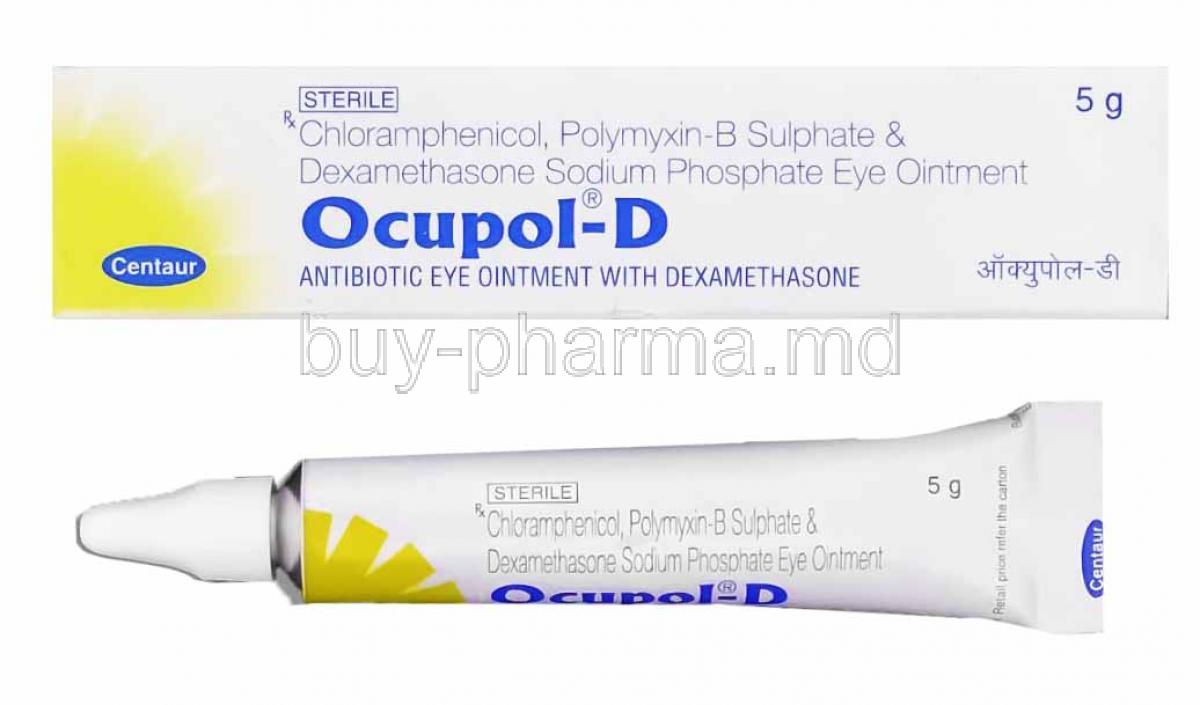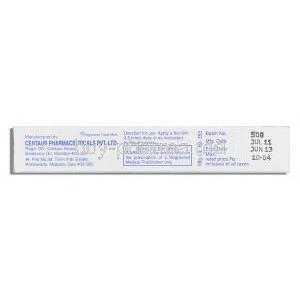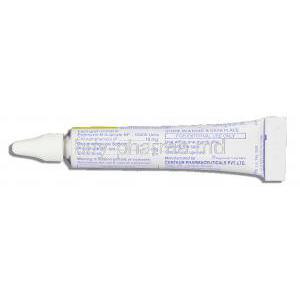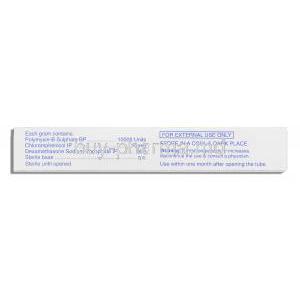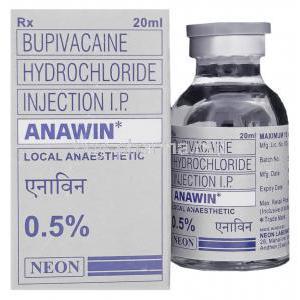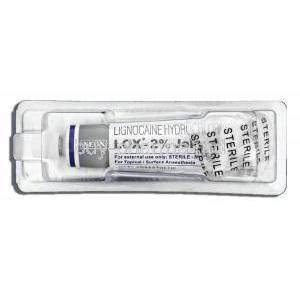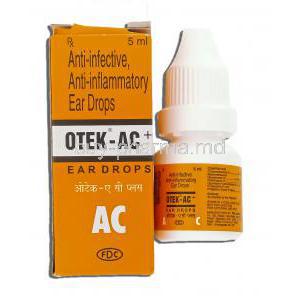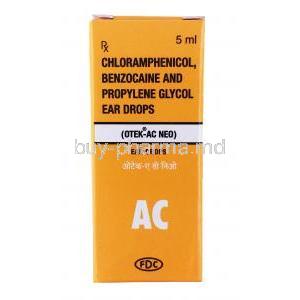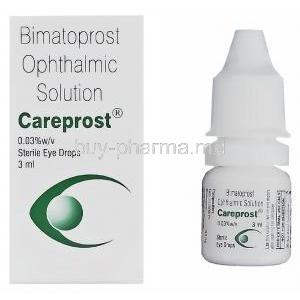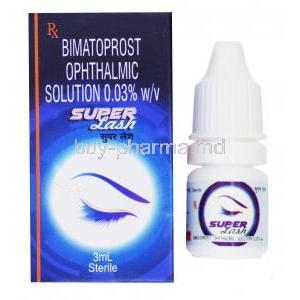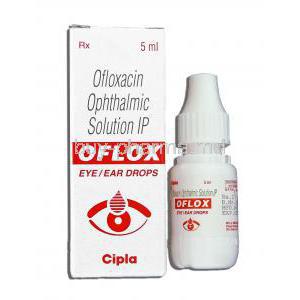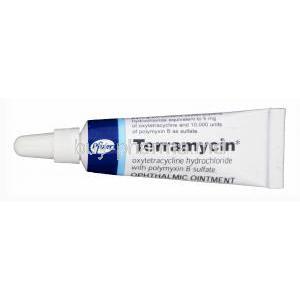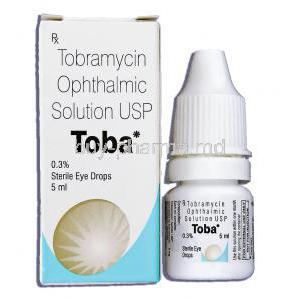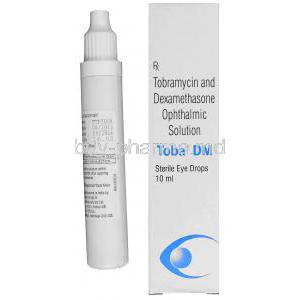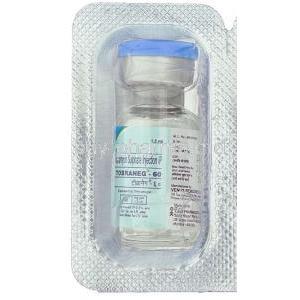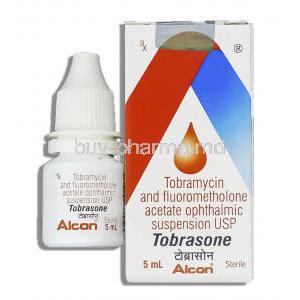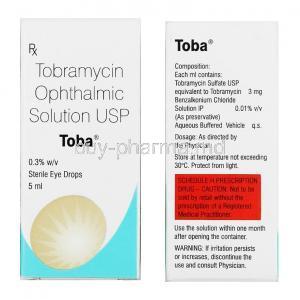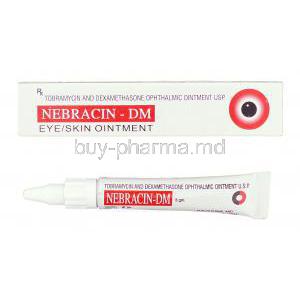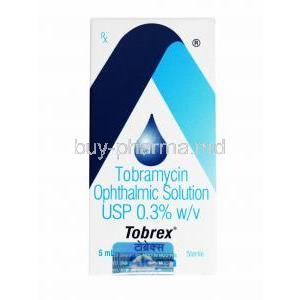Ocupol-D Eye Ointment
- Â
- Introduction to Ocupol-D Eye Ointment
- Composition of Ocupol-D Eye Ointment
- Uses of Ocupol-D Eye Ointment
- Â
- Off-label Uses of Ocupol-D Eye Ointment
- How Ocupol-D Eye Ointment Works
- Dosage and Administration of Ocupol-D Eye Ointment
- Â
- Side Effects of Ocupol-D Eye Ointment
- Serious Side Effects and Adverse Reactions
- Interactions with Other Medications
- Â
- Contraindications of Ocupol-D Eye Ointment
- Careful Administration of Ocupol-D Eye Ointment
- Important Precautions for Ocupol-D Eye Ointment
- Â
- Administration to Special Populations
- Overdosage of Ocupol-D Eye Ointment
- Storage Instructions for Ocupol-D Eye Ointment
- Handling Precautions for Ocupol-D Eye Ointment
Introduction to Ocupol-D Eye Ointment
Ocupol D Eye Ointment is a medication in eye care specifically created to treat bacterial infections that affect the eyes. This medical breakthrough offers more than relief; it serves as a ray of hope for individuals struggling with eye discomfort and the risk of vision loss. The importance of treatments like Ocupol D in fighting eye infections cannot be emphasized enough. If these infections are not treated promptly, they can lead to complications, highlighting the crucial role of targeted medical interventions.
Composition of Ocupol-D Eye Ointment
The recipe for Ocupol D Eye Ointment involves a combination of critical components, each with a crucial role in its effectiveness. The ointment's ability to combat infections and reduce inflammation is credited to the active ingredients working together harmoniously. Moreover, the formulation's pharmaceutical characteristics are designed to promote absorption into the eyes, creating an environment that supports quick healing and recovery.
- Their Functions; The success of Ocupol D hinges on the carefully chosen active ingredients known for their ability to kill bacteria and reduce inflammation providing a comprehensive approach, to treating bacterial eye issues.
- Composition and Pharmaceutical Traits: The Ocupol Ds formula demonstrates expertise by ensuring improved absorption rates and controlled release of its active components. This optimizes treatment results while minimizing adverse effects.
Uses of Ocupol-D Eye Ointment
The Ocupol D Eye Ointment has therapeutic uses addressing many bacterial eye infections. It is mainly recommended for treating conditions characterized by infections and inflammation. Its ability to combat bacteria effectively protects eye health and vision by targeting various pathogens.
- Key areas where Ocupol D is used include managing conjunctivitis, keratitis, and similar infections caused by bacteria. Its formulation is effective in reducing symptoms and promoting recovery.
- The ointment's antimicrobial action covers a spectrum, allowing it to work against numerous bacterial strains, including both Gram-positive and Gram-negative organisms.
- In addition to its properties, Ocupol D also helps reduce inflammatory responses in the eye. This dual function not only speeds up healing but also relieves the discomfort associated with inflammation.
Off-label Uses of Ocupol-D Eye Ointment
In eye care, Ocupol D Eye Ointment stands out as a versatile treatment option that goes beyond its typical uses. Exploring ways to use this ointment has shown promising results, showcasing the innovative strategies healthcare providers are adopting to enhance patient well-being. Its effectiveness in treating infectious eye conditions sheds light on the potential benefits of Ocupol D in managing overall eye health.
- Diving into Unconventional Applications in Eye Care: Ocupol D doesn't limit itself to treatments but also extends its reach to address conditions not originally intended. This exploration highlights its flexibility and the inquisitive nature of professionals seeking to broaden its therapeutic applications.
- Effectiveness in Noninfectious Eye Conditions: A Closer Look: Using Ocupol D for noninfectious eye issues such as allergies and inflammatory disorders underscores its diverse capabilities. While primarily based on real-world experiences rather than formal studies, growing evidence suggests positive outcomes in alleviating symptoms and aiding recovery.
How Ocupol-D Eye Ointment Works
The scientific foundation of Ocupol D Eye Ointment provides insight into its effectiveness in treating eye conditions. Known primarily for fighting infections, the ointment works through a carefully coordinated mechanism. Additionally, its anti-inflammatory properties play a role in speeding up the healing process, offering a two-pronged approach to eye therapy. This combined effect not only limits the growth of bacteria but also reduces the impact of inflammation, creating a favorable environment for eye recovery.
- How Ocupol D Acts Against Bacterial Infections: The key to Ocupol D's ability to kill bacteria lies in its disruption of cell wall synthesis, which is crucial for its effectiveness against various pathogens.
- Anti-inflammatory Effects and Speeding Up Healing: Apart from its function, Ocupol D also reduces inflammatory reactions, leading to less eye discomfort and faster tissue healing. This dual-function aspect highlights its versatility in treatment.
Dosage and Administration of Ocupol-D Eye Ointment
The effectiveness of using Ocupol D Eye Ointment in therapy depends on following the dosage and administration instructions. Customizing the treatment plan according to the patient's condition helps achieve optimal therapeutic results. Applying the ointment correctly enhances its effectiveness. The length of treatment is crucial for resolving the condition. This systematic approach to treatment highlights the importance of accuracy in dosage and administration.
- Dosage Guidelines: The precise dosage of Ocupol D is determined based on the severity and type of infection, emphasizing personalized eye care.
- Application Techniques for Best Results: Proper application methods, such as correctly using and applying the amount of ointment, are essential for ensuring drug effectiveness and maximizing therapeutic advantages.
- Treatment Duration for Conditions: The duration of treatment varies depending on whether it's a short-term remedy or a longer therapy course based on how persistent the infection is and how well it responds to treatment. This underscores an adaptive approach to treatment.
Side Effects of Ocupol-D Eye Ointment
The use of Ocupol D Eye Ointment for purposes brings about various benefits, yet it's important to note that there can be potential side effects. These side effects, which can range from mild to moderate intensity, highlight the significance of using the medication with awareness. A closer look at the side effects shows a range of possible discomforts, like temporary eye irritation, redness, and blurred vision. It is crucial to address these side effects effectively to ensure patients adhere to the treatment plan and continue with their therapy. Adjusting the dosage or how often the ointment is applied can help alleviate these inconveniences and enhance the effectiveness of the treatment.
- Overview of Common Side Effects: The typical side effects include eye discomfort, slight swelling, and sensitivity to light, often indicating that the body is adapting to the medication.
- Managing Minor Side Effects: Simple measures such as using tears for lubrication or reducing how often the ointment is applied temporarily can help manage minor side effects effectively.
Serious Side Effects and Adverse Reactions
Serious side effects and adverse reactions from using Ocupol D Eye Ointment, although uncommon, require medical attention. Detecting and addressing complications early on can help reduce potential risks to eye health. Symptoms like pain, significant changes in vision, or persistent irritation should prompt a quick treatment plan review. Knowing when to seek help is crucial for avoiding worsening side effects and protecting eyesight.
- Identifying and Addressing Severe Complications: Staying alert for symptoms that suggest reactions, such as noticeable swelling or allergic responses, is vital for timely care.
- When to Consult a Doctor: If severe symptoms appear, stop using the ointment and see a healthcare provider to prevent lasting damage to the eyes.
Interactions with Other Medications
Ocupol D Eye Ointment may interact with medications, changing how well it works or leading to unwanted side effects. It's essential to be aware of drug interactions and situations where the ointment should not be used to ensure patient safety. This involves reviewing the patient's current medications, including any over-the-counter drugs and supplements. Taking precautions can help prevent interactions, highlighting the significance of a collaborative relationship between patients and healthcare providers when treating eye conditions.
- Regarding Potential Drug Interactions and Situations to Avoid: Using medications simultaneously, especially other eye treatments, might require treatment plans to prevent conflicts in how they work.
- Considering Over-the-counter Medications and Supplements: Patients should be encouraged to share all medications and supplements they are using so that potential interactions can be addressed proactively.
Contraindications of Ocupol-D Eye Ointment
Ocupol D Eye Ointment can be beneficial for eye conditions but may not be suitable for everyone. In some situations, its use is not recommended due to the risk of side effects or ineffectiveness. Additionally, there are circumstances where caution is advised, requiring an approach when prescribing it. Understanding these limitations is essential for ensuring safety and positive treatment outcomes.
- Absolute Contraindications: If someone has a known allergy to any component of Ocupol D Eye Ointment, they should not use it to avoid allergic reactions.
- Conditions Requiring Caution: Patients with existing eye surface issues or those using eye medications should be evaluated carefully to prevent potential complications.
Careful Administration of Ocupol-D Eye Ointment
In eye treatments, it's crucial to be extra careful when using Ocupol D Eye Ointment on patients who require attention. Each patient needs to consider various factors, such as age, existing health conditions, and other eye treatments they may be receiving. It's vital to monitor and adjust the treatment plan to ensure it is effective and safe for each individual. This personalized approach highlights the significance of tailoring care to each patient in eye care.
- Special Considerations for Vulnerable Groups: Older patients, children, and those with health issues may experience a higher risk of side effects, which might call for adjusted doses or closer monitoring.
- Monitoring and Adjusting Treatment: It is crucial to regularly assess how well the treatment is working and how well it is being tolerated. Changes should be made promptly if any new issues or side effects arise.
Important Precautions for Ocupol-D Eye Ointment
Initiating treatment with Ocupol D Eye Ointment involves following precautions to prevent adverse effects and ensure treatment success. A thorough assessment before starting treatment, including allergy testing, is crucial for identifying any issues. Additionally, it's recommended to avoid wearing contact lenses while using the ointment to lower the risk of infection and improve its effectiveness. These precautions highlight the approach needed when using Ocupol D.
- Pre-treatment Assessment and Allergy Testing: Before starting therapy, it's essential to gather a detailed medical history and conduct allergy tests to avoid any allergic reactions.
- Avoidance of Contact Lenses During Treatment: Patients are advised not to wear contact lenses while undergoing treatment with Ocupol D to prevent irritation and support the healing process.
Administration to Special Populations
When using Ocupol D Eye Ointment, a personalized approach is necessary for groups. Elderly pregnant women, nursing mothers, and children all have physical characteristics that can impact how ophthalmic medications work in their bodies. It's crucial to adjust doses and closely monitor their progress to ensure the treatment is effective and safe. By understanding the needs of each group and following tailored recommendations, we can greatly improve the outcome of their treatment.
- Elderly Adjustments and Monitoring: When treating patients, it may be necessary to lower the dosage or adjust how often the medication is given due to changes in how their eyes absorb the medicine. Regular monitoring for any effects is essential.
- Pregnant Women and Nursing Mothers: Safety Profile and Recommendations: Considering the safety of using Ocupol D during pregnancy and breastfeeding is essential. Generally, caution is advised, and decisions are made based on whether the benefits outweigh any risks to the baby.
- Children: Dosage Adjustments and Safety Considerations: Using Ocupol D in children requires dosage adjustments based on age and weight to prevent giving them too much medication. Safety measures should also include watching for any signs of allergies or adverse reactions.
Overdosage of Ocupol-D Eye Ointment
Although rare instances of overdosing on Ocupol D Eye Ointment can occur, requiring attention and intervention. Recognizing the signs of an overdose and taking action can be crucial in avoiding potential complications. Strategies for managing overdoses focus on easing symptoms and preventing absorption of the medication. It is essential for both healthcare professionals and patients to understand these steps to ensure an effective response in such situations.
- Identifying Signs of Overdosing and Immediate Steps: Symptoms may manifest as tearing, discomfort in the eyes, or vision blurriness. Immediate measures include rinsing the affected eye with water or a saline solution to remove the ointment.
- Addressing Symptoms of Overdosing: Managing symptoms as they arise and monitoring for any developments may be necessary. For cases involving exposure, seeking guidance from an ophthalmology specialist or poison control expert may be recommended.
Storage Instructions for Ocupol-D Eye Ointment
Properly storing Ocupol D Eye Ointment is crucial to maintaining its effectiveness and longevity. It is vital to store pharmaceuticals under conditions that prevent the breakdown of active ingredients or any potential contamination. Furthermore, ensuring the proper disposal of expired or unused ointment is important for safety and reducing accidental exposure.
- Preserving Efficacy through Optimal Storage: It is recommended that Ocupol D be kept at room temperature and shielded from sunlight and moisture to retain its medicinal properties.
- Disposing of Expired or Unused Ointment: Following regulations, it is advisable to return expired or unused ointments to a pharmacy for safe disposal.
Handling Precautions for Ocupol-D Eye Ointment
Proper handling of Ocupol D Eye Ointment is crucial to maintain its sterility and prevent contamination. It's important to follow practices when opening, applying, and storing the ointment as part of patient education. These steps help ensure the safety and effectiveness of the treatment, leading to patient outcomes. To prevent contamination, wash your hands before and after applying the ointment. Be careful not to let the tube tip touch your eye or any other surface. Follow instructions on opening, applying, and storing the ointment correctly. Make sure to apply it to the affected eye and remember to cap the tube immediately after use for optimal therapeutic effects.

